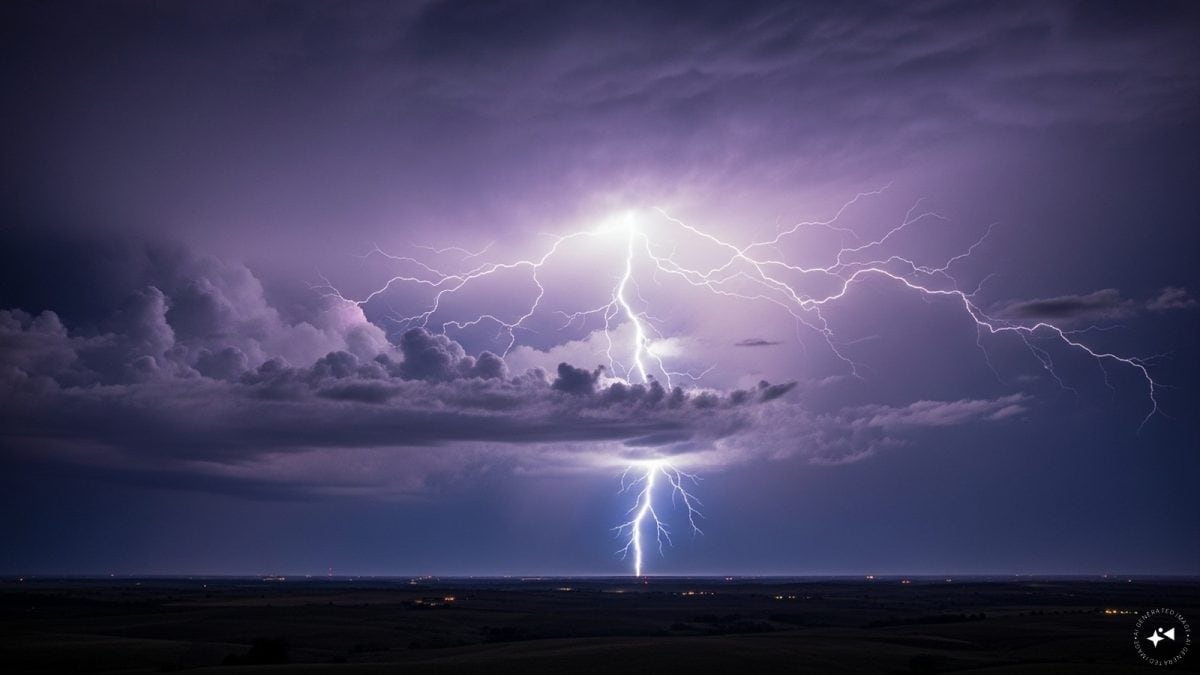Last Updated:June 05, 2025, 17:37 IST
Strategic bombers have long been the aerial equivalent of aircraft carriers - power projection platforms meant not just to fight wars, but to prevent them

Russia's prized strategic assets include heavy, long-range bombers like the Tu-95. (AP Photo)
In a dramatic escalation of its long-range warfare tactics, Ukraine recently launched a successful drone offensive targeting several key Russian airbases. Among the casualties were Russia’s prized strategic assets, heavy, long-range bombers like the Tu-95. These aircraft, symbols of Russian military prestige and vital components of its nuclear deterrent, were reduced to wreckage by relatively inexpensive unmanned aerial vehicles.
The incident has reignited debate: in an era dominated by cheap drones and precision-guided missiles, do strategic bombers, often described as “flying fortresses", still matter?
Strategic bombers have long been the aerial equivalent of aircraft carriers – power projection platforms meant not just to fight wars, but to prevent them. Their very presence in the skies sends a powerful message: this territory is under our control, and any challenge will be met with overwhelming force.
Historically, these aircraft have served as the airborne arm of a nation’s nuclear doctrine. On August 6, 1945, the world witnessed their devastating potential when the US Air Force’s B-29 Enola Gay dropped the first atomic bomb on Hiroshima. The B-29 had a range of nearly 6,000 kilometres and could carry over 9 tonnes of payload, unprecedented at the time. Since then, bombers have formed one leg of the nuclear triad, alongside land-based ICBMs and submarine-launched ballistic missiles (SLBMs).
Despite advances in missile technology, strategic bombers remain indispensable. Unlike ballistic missiles, which are often singular-use and carry nuclear payloads, bombers offer flexibility. They can launch, loiter, abort missions mid-flight, or strike with conventional precision-guided weapons. Their continued relevance is underpinned by their deterrent value, both conventional and nuclear.
In the 21st century, warfare is no longer about trench lines and tank battles alone. Long-range precision strikes, satellite-guided munitions, electronic jamming, and cyber warfare now define military supremacy. Yet strategic bombers remain at the heart of long-range deterrence.
Why?
Because they can be stationed thousands of kilometres away from conflict zones, safely beyond the reach of most short-range missiles, yet remain capable of delivering strikes deep into enemy territory. Unlike fighter jets, which require proximity and airbase support, strategic bombers operate from distant, secure bases, often impervious to immediate retaliation.
They are also uniquely suited for today’s threat matrix. In a potential war, adversaries like China and Russia are expected to saturate US bases and aircraft carriers in the Indo-Pacific with cruise and ballistic missiles. This raises the vulnerability of tactical aircraft and ships. But strategic bombers, flying from distant continents, would likely remain untouched and ready to respond.
Modern bombers are no longer just nuclear delivery systems. The US B-2 Spirit and the upcoming B-21 Raider, Russia’s Tu-160 Blackjack, and China’s under-development H-20 are stealth platforms designed for multi-domain warfare. Capable of carrying hypersonic missiles, electronic warfare pods, and long-range cruise missiles, these aircraft are force multipliers.
Moreover, they offer the kind of psychological impact that missiles can’t. As Italian airpower theorist Giulio Douhet once said, “It is now possible to penetrate deep behind enemy lines without even breaking them." That ability, to hover as a threat, visible on radars or even satellite imagery, forces adversaries to rethink aggression.
Strategic bombers also serve as a bridge between naval and air power. Equipped with anti-ship cruise missiles, they can track and destroy enemy warships far beyond the horizon, a role increasingly relevant as global powers pivot toward Indo-Pacific maritime confrontations.
Who Holds the Keys to the Sky?
Today, only three nations maintain active fleets of strategic bombers, each using them as a cornerstone of their defense doctrines:
United States
B-52 Stratofortress – 72 aircraftB-1B Lancer – 40 aircraftB-2 Spirit – 18 aircraftRussia
Tu-95MS – 47 aircraftTu-160 – 15 aircraftChina
Xi’an H-6 – Approxiamtely 150 aircraft (modernised versions)India, though a rising military power, does not operate strategic bombers. Its 130 Jaguar aircraft serve as nuclear-capable fighter-bombers but lack the range and payload of true strategic bombers.
Even as drone warfare evolves and hypersonic missiles begin to dominate headlines, strategic bombers are adapting, not fading. Their long loiter time, versatility in armaments, and role in multi-theater command structures make them indispensable.
Emerging platforms like the B-21 Raider promise a future where bombers are harder to detect, quicker to deploy, and even more precise in execution. In essence, they are evolving from Cold War relics to ultra-modern sentinels of the sky.
The drone attacks on Russian airbases proved that no platform is invulnerable. But strategic bombers are far from obsolete. They are evolving faster than the threats around them.
Location :Russia
First Published:News world Are Strategic Bombers Still Relevant In The Age of Drones?

 1 month ago
1 month ago


















